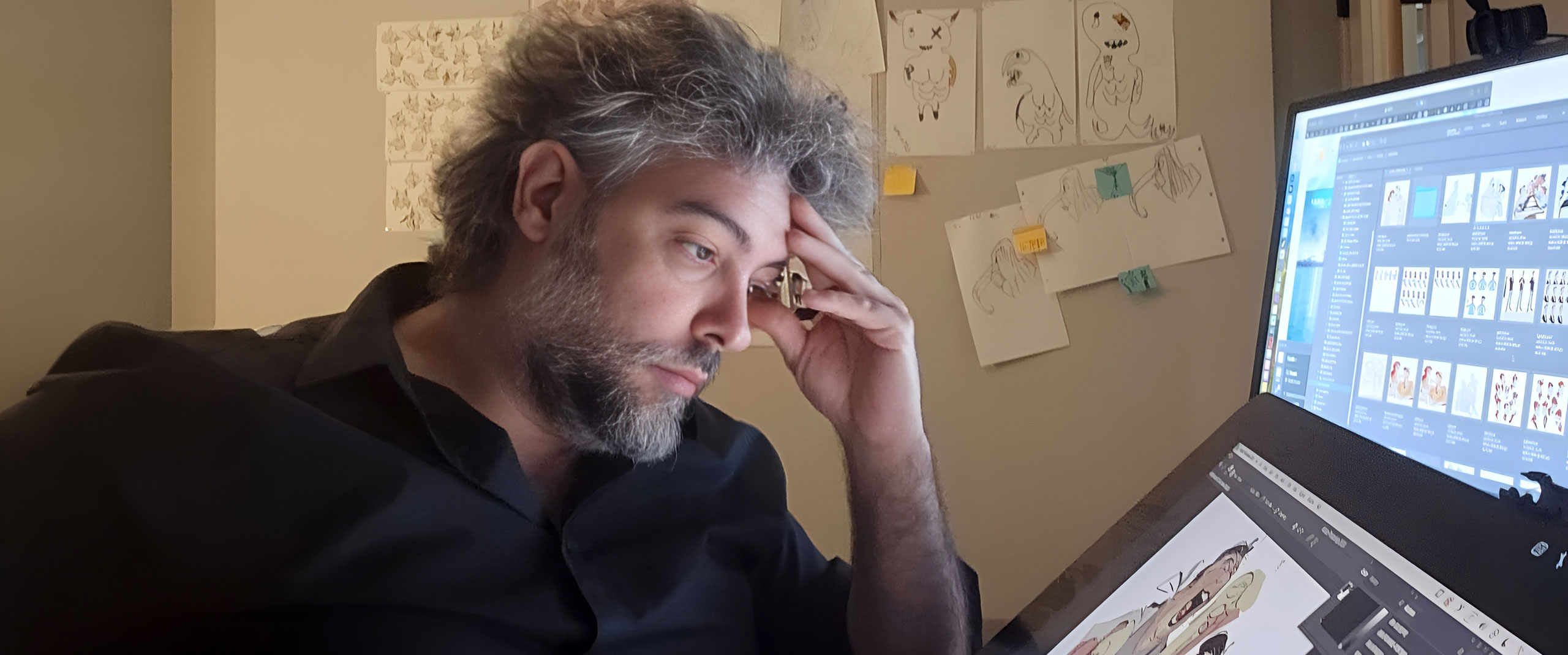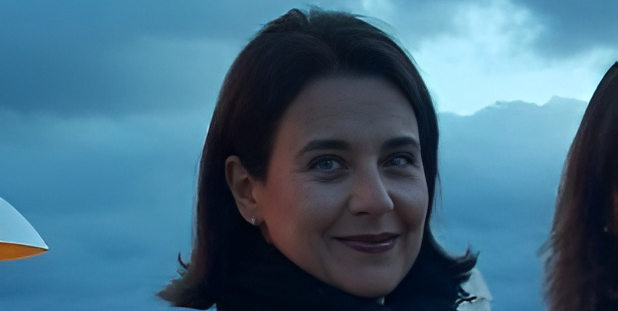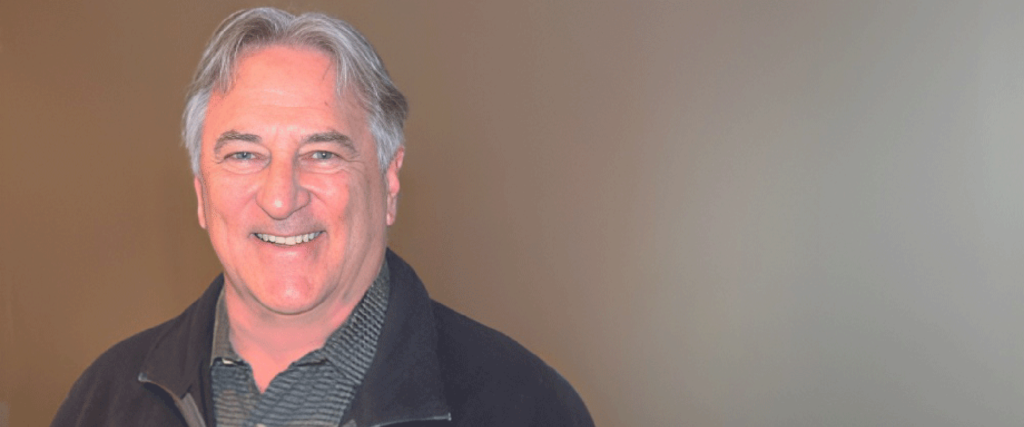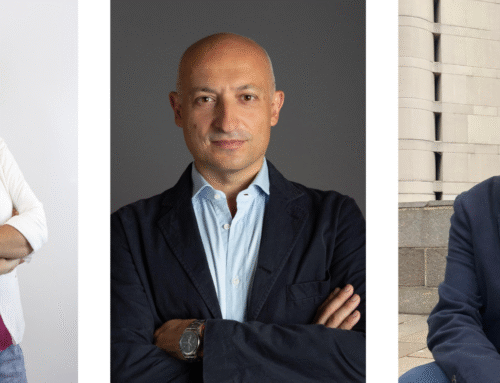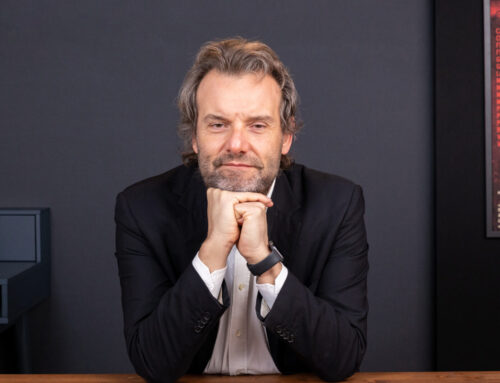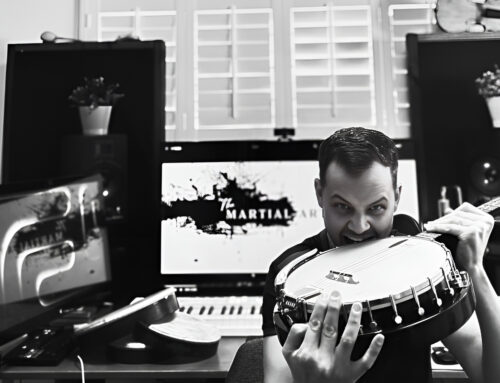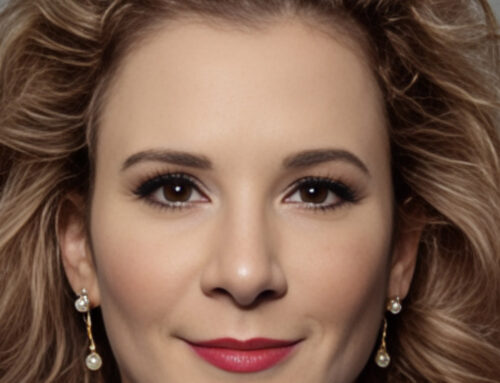Massimiliano Narciso, Lead Character Designer at Netflix and Oscar winner
Born in 1975 in Milan and transplanted to Los Angeles to pursue the dream of working in Hollywood, Narciso is a Lead Character Designer at Netflix. In the 11-minute piece directed by Dave Mullis and co-written by John Lennon and Yoko Ono’s son, Sean Lennon, he did what he knows: “I am the person who researches the anatomy of the characters, imagines how they move, how they should be dressed, their expressions, and makes sure they keep their physicality and personality through the end.”
The journey to the Dolby Theatre has been long. Could you share how this professional and personal adventure started?
I’ve been drawing since I was little. Even in preschool, I would be told: “You’re good!” After the Oscar, I received messages from elementary school classmates who wrote to me: “I knew it!” And to think that there was no creative vein in my family: my father worked for Swarovski and my mother for the Post Office. We always joked about this, trying to trace back some artistic ancestor, but we never found one. I’m the first of my lineage!
When did this passion become more serious and then a job?
While attending a technical high school, I enrolled in a three-year evening school to study animation and directing, the CTC in Milan, where I really began drawing. There were no computers; everything was done by hand with just paper, pencils, and erasers, to capture movements, expressions, and invent stories. My teachers had made history in Italian advertising working for Carosello. I started collaborating with them. My very first job in this field was assisting one of my professors on a Mr. Muscle advertisement. I remember sketching the enzymes that defeated dirt and dragged it down the sink drain. That’s when my parents understood that I was serious about it (laughs).
What happened next?
One of my classmates at the evening school was Alessandro Barbucci, who would become a teacher at the Disney Academy. He arranged an interview for me to join. At that time, Disney had its publishing department in Milan, where comics, graphic novels, and books inspired by characters created in Burbank were produced. I was hired at the age of 19. The other 10 individuals who joined with me came from all over Italy; they were highly skilled, and everything around us was new and to be constructed. We felt like the chosen 11.
When did you decide to cross the Ocean and move to the US?
I was already operating in the American division at Disney Publishing. I was engaged in adapting feature films into comics, such as Lilo & Stitch, Frozen, and Pirates of the Caribbean. Then I established my studio with a colleague, Marieke Ferrari, and we continued to collaborate with Disney as freelancers. We created the Alice in Wonderland books, for instance. In 2017, I visited the CTN Expo in Burbank, a prestigious event for people in the animation world. I brought a portfolio that I had prepared attempting to adapt a comic book into an animated format. I hadn’t attended American universities, where the professors, who are influential figures in the industry, train you to tailor presentations to meet the requirements of Studios. Nonetheless, it went very well: I was approached by Disney Animation in Burbank, inviting me to create characters for a feature film, “Raya and the Last Dragon.” It was like a seismic shift in my life: sudden, explosive. I was 35, I didn’t know a word of English, and I had no intention of leaving Milan. I accepted the assignment, with the stipulation of working from Italy with a team of translators. Then, Laika Animation reached out for “Missing Link”. A week after I delivered, Warner Bros. offered me an opportunity to pitch for “Green Eggs and Ham,” an animated series adapted from the classic Dr. Seuss children’s book. They suggested: come here, we’ll handle everything. Two months later, I was in Burbank. I initially thought I would stay just for this assignment. It was 2019, and I’m still here.
Was it the right choice? Would you do it again?
Absolutely. Having experience in both worlds is invaluable. I learned everything in Italy, from Italian mentors, professors, and colleagues. My aesthetic and artistic sensitivity were shaped there. However, I would never go back. Now that my family has joined me here, this is home. I feel like I am at the center of the industry here. I have access to the most innovative softwares, we have resources to create and to go wild with imagination: you really feel things happening all around you. Moreover, I have the opportunity to work side by side with my idols, with people who have made history in animation. And then, even Sean Lennon showed up!
Speaking of him: can you share how you got involved in his project?
Three years ago, Sean Ono Lennon was asked to develop a music video for the fiftieth anniversary of “Happy Xmas (War Is Over),” the protest song against war that his parents created in 1971 and became an anthem of global pacifism. However, he wasn’t interested in creating a simple video. He was most intrigued by the possibility of expanding the message of the song through a narrative film. One year later, Mullins and Sean reached out to me with a script: “Do you like challenges?” they asked. I accepted. It all happened so quickly; I still can’t believe it.
Where do you think the Animation is going? Are you worried about AI?
I think that big Studios are running out of time. They’re already producing significantly less and outsourcing much of the production after developing the concept and characters. Animation will soon become more decentralized. Additionally, artificial intelligence is advancing rapidly. It’s wise to learn to utilize it, to harness its potential. Although it’s not yet capable of assisting me in my work. The level of control I exert over the characters throughout the production process is too intricately tied to storytelling and the graphic portrayal of emotions. We are still needed to tilt a character’s head in a certain way, to make them grimace with their lips… A machine can’t do that.
Is there a character that you would love to draw?
Dylan Dog, for sure. I never got the chance. But it’s never too late. I enjoy animation, even if I dream about returning to drawing for comics, and I already have something ready…
Share:
Born in 1975 in Milan and transplanted to Los Angeles to pursue the dream of working in Hollywood, Narciso is a Lead Character Designer at Netflix. In the 11-minute piece directed by Dave Mullis and co-written by John Lennon and Yoko Ono’s son, Sean Lennon, he did what he knows: “I am the person who researches the anatomy of the characters, imagines how they move, how they should be dressed, their expressions, and makes sure they keep their physicality and personality through the end.”
The journey to the Dolby Theatre has been long. Could you share how this professional and personal adventure started?
I’ve been drawing since I was little. Even in preschool, I would be told: “You’re good!” After the Oscar, I received messages from elementary school classmates who wrote to me: “I knew it!” And to think that there was no creative vein in my family: my father worked for Swarovski and my mother for the Post Office. We always joked about this, trying to trace back some artistic ancestor, but we never found one. I’m the first of my lineage!
When did this passion become more serious and then a job?
While attending a technical high school, I enrolled in a three-year evening school to study animation and directing, the CTC in Milan, where I really began drawing. There were no computers; everything was done by hand with just paper, pencils, and erasers, to capture movements, expressions, and invent stories. My teachers had made history in Italian advertising working for Carosello. I started collaborating with them. My very first job in this field was assisting one of my professors on a Mr. Muscle advertisement. I remember sketching the enzymes that defeated dirt and dragged it down the sink drain. That’s when my parents understood that I was serious about it (laughs).
What happened next?
One of my classmates at the evening school was Alessandro Barbucci, who would become a teacher at the Disney Academy. He arranged an interview for me to join. At that time, Disney had its publishing department in Milan, where comics, graphic novels, and books inspired by characters created in Burbank were produced. I was hired at the age of 19. The other 10 individuals who joined with me came from all over Italy; they were highly skilled, and everything around us was new and to be constructed. We felt like the chosen 11.
When did you decide to cross the Ocean and move to the US?
I was already operating in the American division at Disney Publishing. I was engaged in adapting feature films into comics, such as Lilo & Stitch, Frozen, and Pirates of the Caribbean. Then I established my studio with a colleague, Marieke Ferrari, and we continued to collaborate with Disney as freelancers. We created the Alice in Wonderland books, for instance. In 2017, I visited the CTN Expo in Burbank, a prestigious event for people in the animation world. I brought a portfolio that I had prepared attempting to adapt a comic book into an animated format. I hadn’t attended American universities, where the professors, who are influential figures in the industry, train you to tailor presentations to meet the requirements of Studios. Nonetheless, it went very well: I was approached by Disney Animation in Burbank, inviting me to create characters for a feature film, “Raya and the Last Dragon.” It was like a seismic shift in my life: sudden, explosive. I was 35, I didn’t know a word of English, and I had no intention of leaving Milan. I accepted the assignment, with the stipulation of working from Italy with a team of translators. Then, Laika Animation reached out for “Missing Link”. A week after I delivered, Warner Bros. offered me an opportunity to pitch for “Green Eggs and Ham,” an animated series adapted from the classic Dr. Seuss children’s book. They suggested: come here, we’ll handle everything. Two months later, I was in Burbank. I initially thought I would stay just for this assignment. It was 2019, and I’m still here.
Was it the right choice? Would you do it again?
Absolutely. Having experience in both worlds is invaluable. I learned everything in Italy, from Italian mentors, professors, and colleagues. My aesthetic and artistic sensitivity were shaped there. However, I would never go back. Now that my family has joined me here, this is home. I feel like I am at the center of the industry here. I have access to the most innovative softwares, we have resources to create and to go wild with imagination: you really feel things happening all around you. Moreover, I have the opportunity to work side by side with my idols, with people who have made history in animation. And then, even Sean Lennon showed up!
Speaking of him: can you share how you got involved in his project?
Three years ago, Sean Ono Lennon was asked to develop a music video for the fiftieth anniversary of “Happy Xmas (War Is Over),” the protest song against war that his parents created in 1971 and became an anthem of global pacifism. However, he wasn’t interested in creating a simple video. He was most intrigued by the possibility of expanding the message of the song through a narrative film. One year later, Mullins and Sean reached out to me with a script: “Do you like challenges?” they asked. I accepted. It all happened so quickly; I still can’t believe it.
Where do you think the Animation is going? Are you worried about AI?
I think that big Studios are running out of time. They’re already producing significantly less and outsourcing much of the production after developing the concept and characters. Animation will soon become more decentralized. Additionally, artificial intelligence is advancing rapidly. It’s wise to learn to utilize it, to harness its potential. Although it’s not yet capable of assisting me in my work. The level of control I exert over the characters throughout the production process is too intricately tied to storytelling and the graphic portrayal of emotions. We are still needed to tilt a character’s head in a certain way, to make them grimace with their lips… A machine can’t do that.
Is there a character that you would love to draw?
Dylan Dog, for sure. I never got the chance. But it’s never too late. I enjoy animation, even if I dream about returning to drawing for comics, and I already have something ready…

